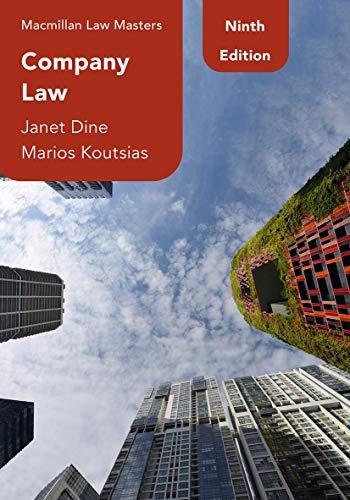Question
Marcus owns Brody's Greek Restaurant. George McHale, a friend of Marcus's who owns a smoothie bar, came to Marcus and proposed that together they buy
Marcus owns Brody's Greek Restaurant. George McHale, a friend of Marcus's who owns a smoothie bar, came to Marcus and proposed that together they buy an old building, renovate it, and then move both the restaurant and the smoothie bar into it along with other tenants. Marcus thought it was a great investment, and also that the new location would be highly beneficial for his restaurant. He needed approximately $200,000 for his share of the buy-in of the entity that will purchase, renovate, and manage the building. Because of other recent large expenses, however, Marcus finds himself short of cash at the present time. However, Marcus's sister, Henrietta, age 48, was willing to help him and make the investment. George proposes a plan where they form a C corporation called Oxley, Inc. that will purchase and operate the building. George will contribute $300,000 in exchange for 60% of the shares and Henrietta will contribute $200,000 in exchange for 40% of the shares. Henrietta's only large liquid asset was her self-directed IRA, which owned $325,000 in stocks and bonds. To get the required cash for the investment, she directed the IRA to sell $200,000 worth of securities and to use the proceeds to invest in the shares of the new corporation, Oxley, Inc. In addition to the cash contributions, Oxley, Inc. used $500,000 of debt to fund the purchase, borrowed from a bank. The bank making the loan required that George, Marcus, and Henrietta all personally guarantee the loan, and they each signed a limited personal guarantee, George for 60% of the debt, Marcus for 30% and Henrietta for 10%. (This means that if Oxley, Inc. defaults on the loan, the bank can pursue their personal assets in collection of the debt.) When they structured the transaction, they relied on the advice of George McHale's adviser Irina Spalko, an experienced CPA, who advised them that the investment by the self-directed IRA in the Oxley, Inc. shares was a nontaxable transaction, and that is how Henrietta treated it when filing her tax return.
Suppose that this transaction has been proposed but has not happened yet. Assume that Henrietta is convinced that this is an excellent investment, and she is determined to use the assets from her self-directed IRA to make the investment. She feels that the return on investment will adequately compensate for any necessary costs. Also assume that George is Henrietta's son-in-law, and you are aware of this fact. Take a tax-planning perspective to describe a better way to structure the transaction to make the investment while minimizing taxes.
Step by Step Solution
There are 3 Steps involved in it
Step: 1

Get Instant Access to Expert-Tailored Solutions
See step-by-step solutions with expert insights and AI powered tools for academic success
Step: 2

Step: 3

Ace Your Homework with AI
Get the answers you need in no time with our AI-driven, step-by-step assistance
Get Started


